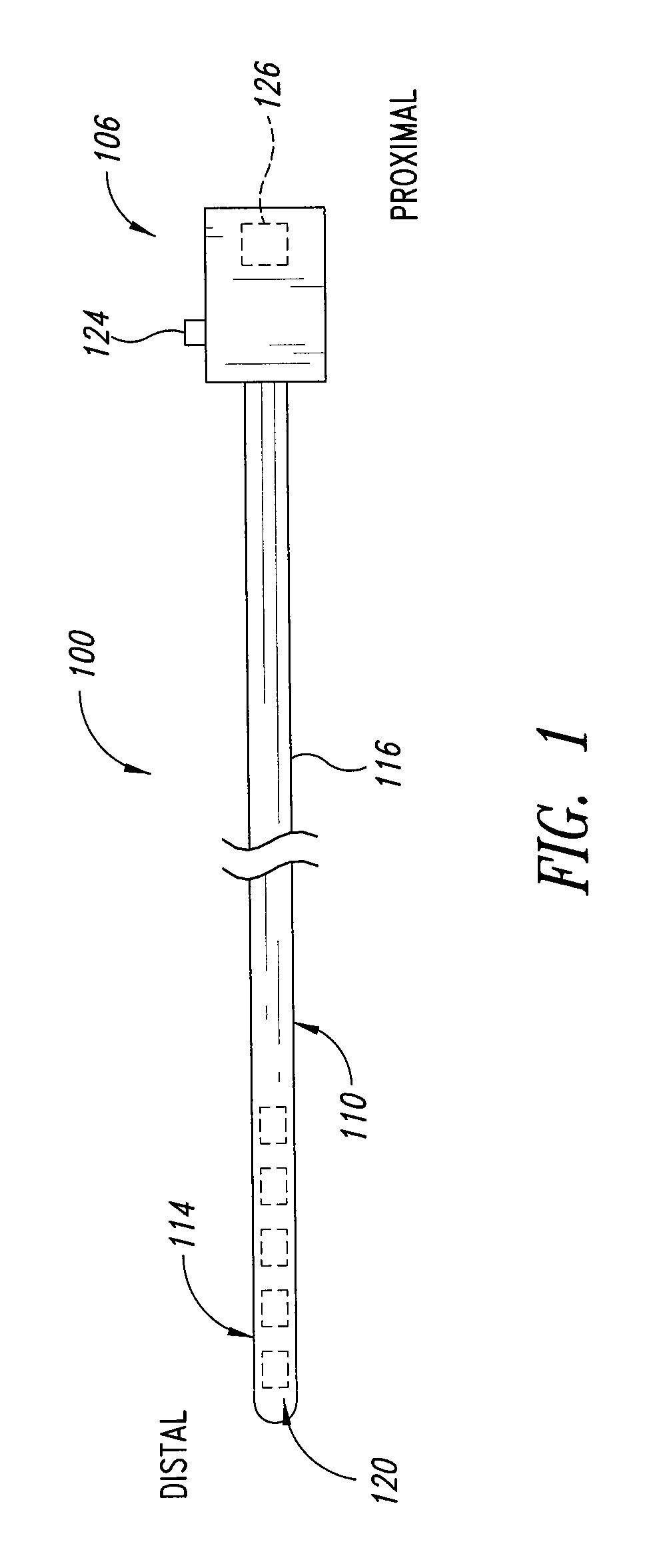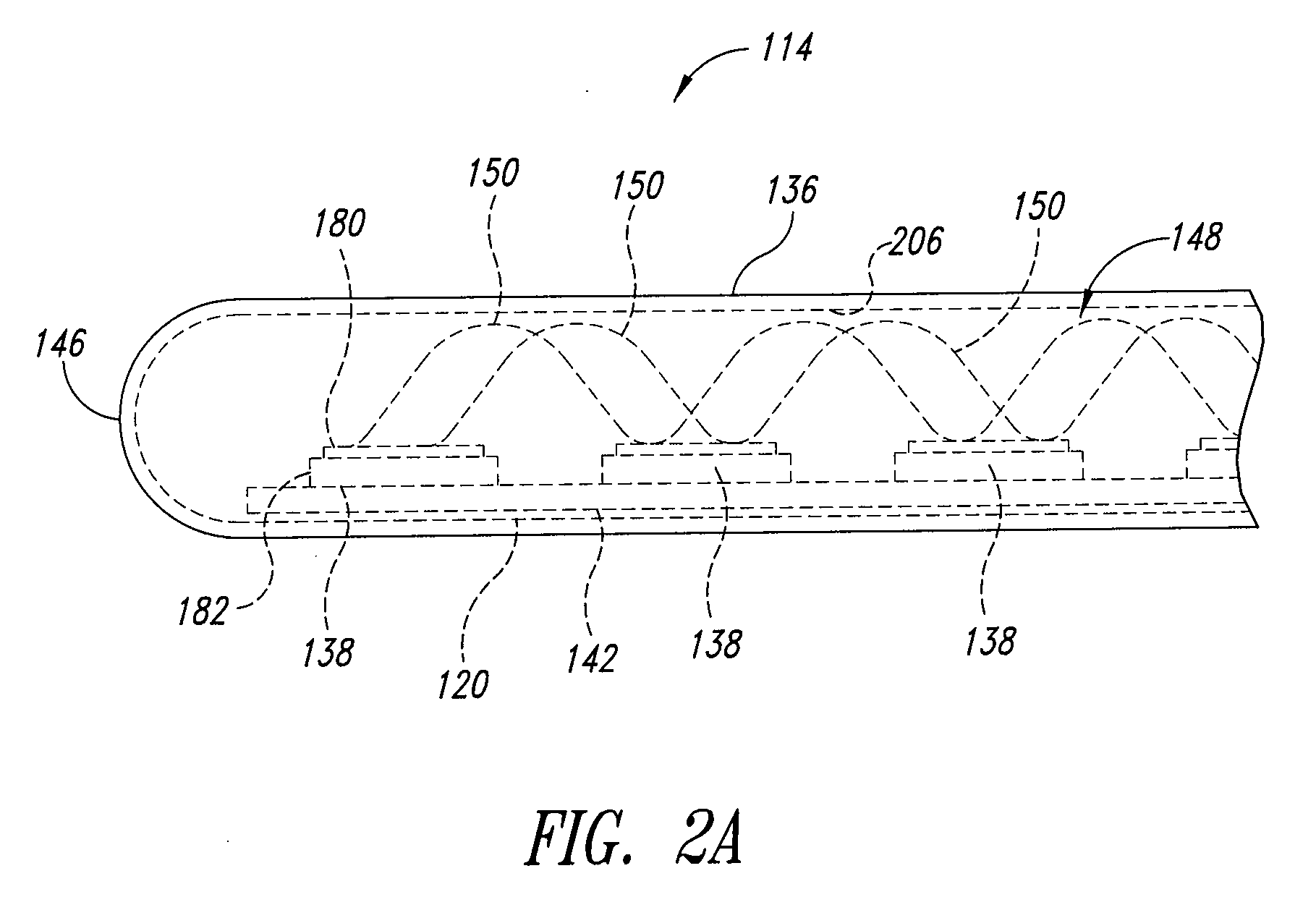Light delivery system
- Summary
- Abstract
- Description
- Claims
- Application Information
AI Technical Summary
Benefits of technology
Problems solved by technology
Method used
Image
Examples
Embodiment Construction
[0059]FIG. 1 is a side elevational view of a light delivery system 100 including a control system 106 and a catheter assembly 110 extending distally from and coupled to the control system 106, according to one embodiment. The light delivery system 100 can be used to perform various types of light therapy. Light therapy is broadly construed to include photo-activating or photo-exciting one or more target cells by subjecting the one or more target cells to one or more wavelengths of light that are approximately close to, if not equivalent to, at least one excitation wavelength of the target cells. This photo-excitation process can be used during an oncology treatment program, for example, to treat diseased or otherwise undesirable and / or cancerous target cells. It is understood that even if one cell is “targeted,” it is possible that other cells in a vicinity of the targeted cell may also be subjected to light. The light delivery system 100 can be used to treat other types of abnormal...
PUM
 Login to View More
Login to View More Abstract
Description
Claims
Application Information
 Login to View More
Login to View More - R&D
- Intellectual Property
- Life Sciences
- Materials
- Tech Scout
- Unparalleled Data Quality
- Higher Quality Content
- 60% Fewer Hallucinations
Browse by: Latest US Patents, China's latest patents, Technical Efficacy Thesaurus, Application Domain, Technology Topic, Popular Technical Reports.
© 2025 PatSnap. All rights reserved.Legal|Privacy policy|Modern Slavery Act Transparency Statement|Sitemap|About US| Contact US: help@patsnap.com



